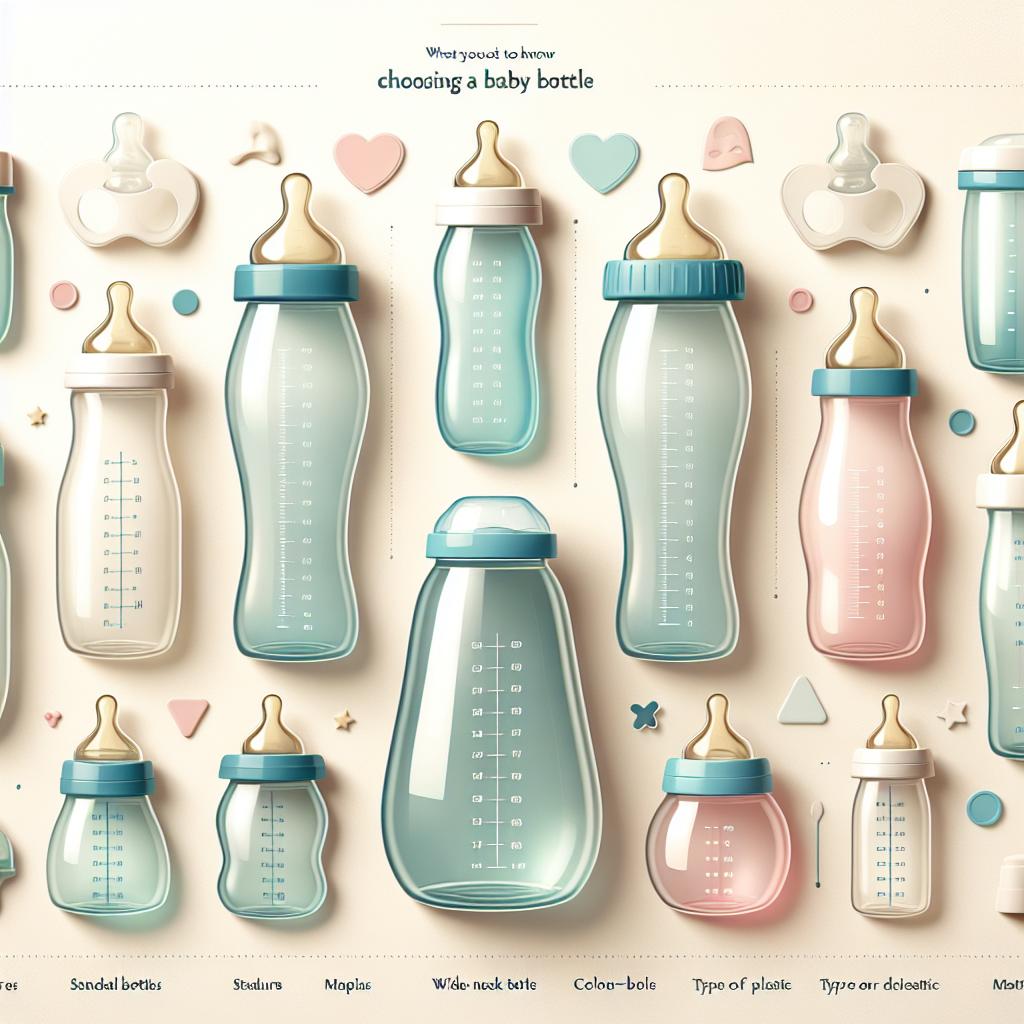Crucial Factors for Choosing a Baby Bottle
Nothing can be more fulfilling and yet challenging for new parents than the nurturing process of their newborn. An essential task in this journey is choosing baby bottles – an item your baby uses regularly, and one that might affect their comfort and health. Here is an insightful guide to help you identify the best baby bottle tips, and aid you in making an informed baby bottle selection.
The Material of the Bottle
One of the primary factors to consider when choosing a baby bottle is the material. Common choices are:
- Plastic: Light and shatterproof but they can wear down over time.
- Glass: BPA-free and long-lasting, but they can be heavy and breakable.
- Stainless Steel: BPA-free and durable, but they can be expensive and not see-through.
- Silicone: Light and unbreakable, but they can be expensive and hold less formula or milk.
Some parents prefer plastic bottles because they’re affordable and light, which makes them convenient for outings. But others choose glass for their chemical-free makeup and durability. An excellent guide on how to choose the right baby bottle can be found here. Remember, the material you select largely depends on your lifestyle and personal preference.
Bottle Shape and Size
Another important factor is bottle shape and size. Some baby bottles are straight while others are angled or designed with a contoured shape. You will find different shapes have their own pros and cons. Straight bottles are easier to clean, while the angled ones help reduce the intake of air. For newborns, smaller 5-ounce bottles would suffice but eventually, you’ll need larger 9-ounce bottles as your baby grows and starts eating more.
The Type of Nipple
The nipple, also known as the teat, is an essential part of your baby bottle selection. A nipple that closely mimics a mother’s breast might be the best choice if you’re planning on combining breast and bottle feeding. Some nipples are designed to avoid nipple confusion and also to reduce the amount of air a baby swallows, preventing discomfort from gas. More on understanding different nipple types can be found here.
Easy To Clean
Bottles with fewer parts are generally easier to clean. But some bottles that are designed to reduce colic and reflux may have extra parts that are more difficult to clean. Always ensure your baby bottle is dishwasher safe if you intend to clean it in a dishwasher.
Test and Switch
Your baby might not like the first bottle you choose, and it’s completely normal. You may need to experiment with a few different types before finding the one that suits your baby. Here are some secret tricks for getting your baby to love the bottle.
Remember, choosing the right baby bottle can significantly impact your child’s comfort and health. Your baby’s reaction to different types of bottles is the best indicator of which one is the right fit. Be patient, flexible, and attentive, and good luck with your bottle-feeding journey!
Bottle’s Venting System
An often-overlooked factor while selecting a baby bottle is its venting system. Good venting reduces air intake, which can lead to gassiness and colic in your baby. Many bottles come with built-in vents or venting systems, but remember that bottles with more complex venting systems often come with more parts, hence are harder to clean. More about understanding bottle venting can be found at Parents.com.
Choosing the Right Nipple Flow
Having the correct nipple flow is essential for your baby’s comfort and safety. Most nipples are marked with an age range guideline. However, keep in mind that every baby is different. Therefore, what works for other babies may not work for your baby. Some babies may need a slower flow, while others might prefer a faster one. Also, consider the thickness of the formula if you’re using one. Thicker formula may require a more giant nipple hole. More tips on this subject can be found at NCT.org.uk.
Selecting the Right Lid
The lid or the cap of the bottle is also essential since it protects the nipple from dust and damage. Choose a cap that’s easy to put on and remove, yet fits securely. Some also prefer to have caps that can double up as a measuring cup or a formula dispenser.
Choosing a Bottle That’s Good to Hold
Find a baby bottle that is comfortable for both you and your baby to hold. Some bottles come with a wide neck, which makes them easier and more comfortable to hold. Also, as your baby gets older, they will want to hold the bottle themselves, so consider a bottle with handles or grips.
The Importance of Brand Reputation
Brand reputation can also play a significant role in your decision. Well-established brands often have a reliable and consistent product quality that you can count on. They also tend to have better customer service, which can be crucial if you have any questions or issues with the bottle. More guidelines on choosing the right brands can be found at BibsWorld.com.
Choosing the Right Bottle Based on Lifestyle
Last but not least, your lifestyle and specific needs should also influence your choice. For instance, if you travel frequently with your baby, you might want a bottle that comes with a travel cap. If you prefer washing bottles in a dishwasher, ensure you choose a bottle that’s safe for it. If you’re breastfeeding and supplementing with a bottle, a bottle resembling the natural flow of the breast would be a better choice. More tips on lifestyle-based choices for baby bottles can be found at HappyFamilyOrganics.com.
Indeed, finding a suitable baby bottle necessitates various considerations. It’s not simply about purchasing a container but choosing a product that evolves with your baby’s needs. It may require a bit of experimentation, but eventually, you’ll find the design that both you and your baby will love.

